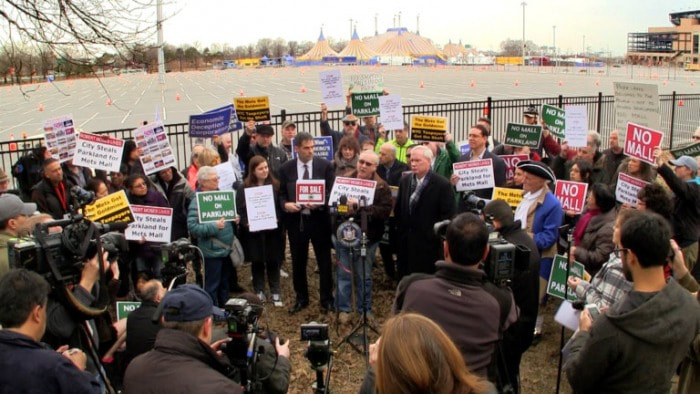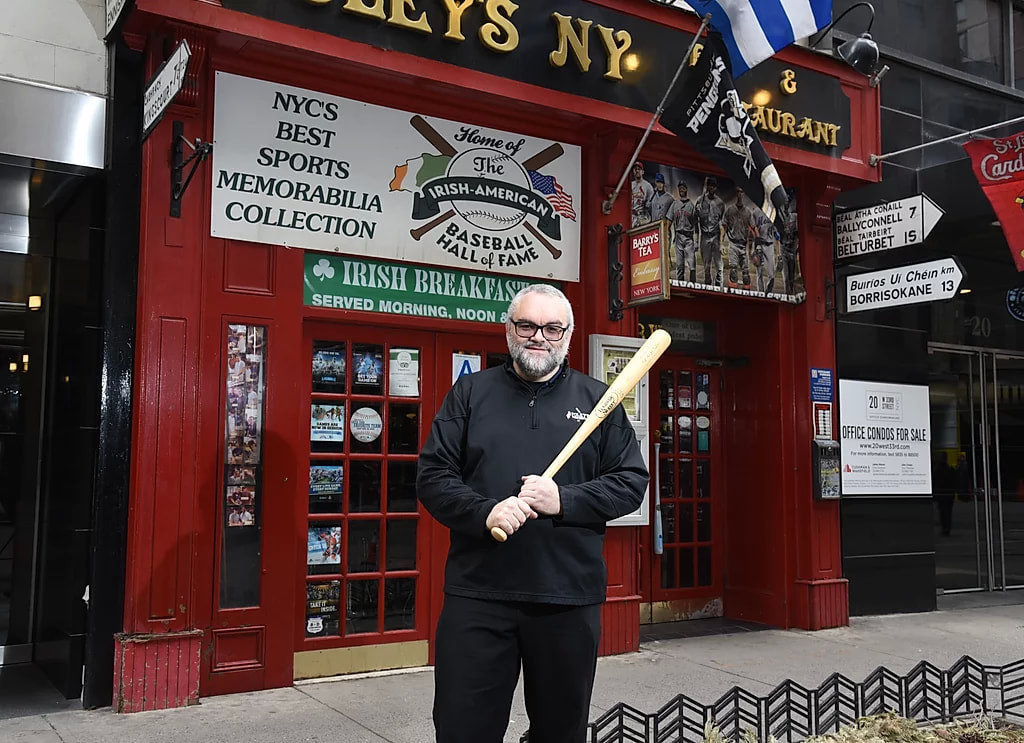|
It's bad enough that Baseball Commissioner Rob (Roll ‘Em) Manfred has brought about a sleazy era of gambling on the sport that has banned Pete Rose for life.
Baseball is also the former holier-than-thou business that banned Willie Mays and Mickey Mantle for fronting for gambling dens after their retirement. They were reinstated, but then Rose got busted for life for violating gambling rules. Nowadays baseball runs blatantly insulting commercials of young males displaying their insecurities by betting on sports events. Some hitter in a distant ballpark smacks a double off the wall and the young man leaps from his chair, as if he himself hit the damn ball. Encouraging gambling is Rob Manfred’s game, and maybe Steven A. Cohen’s world, on deck. The Mets’ owner is pushing to see if he can get away with building a gambling den a dice throw away the ball park named after a bank. Cohen has been an activist owner since taking over the Mets – getting rid of a lot of deadwood in the organization and spending millions upon millions for better players plus activists like Billy Eppler and Buck Showalter. Those are the current conditions, and Cohen spends and spends. (He also showed great showman instincts by staging two of the best feelgood events I’ve ever seen in a ballpark – the retirement of the No. 17 of Keith Hernandez, and reviving the Old Timers’ Game and festivities, including a dying John Stearns, and survivors of Mets’ stalwarts Tommie Agee, Alvin Jackson and Bill Robinson. Events like these do not just happen. They take money, and staff, and good instincts on the part of the still-new owner. One suspects Cohen will even go ahead and sign Carlos Correa, unless Correa truly has a lead leg. Cohen is no fool. He avoided getting stung by over-paying for the five-innings-a-week pitcher, Jacob deGrom, despite the grand memories of when deGrom was healthy. (As for deGrom’s cold-blooded “I’m rich! I’m rich!” smile when he bolted from the Mets with nary a kind word about the good times in Flushing: As we say in Queens, Yeccch!) Cohen understands the process of making more and more money. He has noticed the bleak concrete emptiness of parking lots -- “50 acres of asphalt" -- to the west of New Shea Stadium, and he has envisioned late-model cars bringing lucky tigers escorting handsome women, with money to burn. Or at least, that is the image. Fortunately, the governments of New York city and state still have a chance to veto a gambling den on very public land. (Wait, don’t Mets fans park their cars there 81 home games a year? Isn’t traffic bad enough in that tangled sector?) According to the Wall Street Journal, Cohen held an open house for interested Queens types the other day. No fool, Steven A. Cohen. He played down the lust for a gambling den by saying he just wanted to hear the opinion of the Queens folks – known for their cagey urban instincts (sussing out the criminality and bullying of former Queens resident Donald Trump.) At the open house, my Queens homeys seemed to voice a skeptical attitude toward the gambling den. According to the WSJ, the folks who showed up – for a ballpark frank! – voiced preference for live music, dining, art exhibits and festivals rather than gambling. The WSJ reported that Laura Shepard, a community organizer for the transit advocacy group Transportation Alternatives, told Cohen that the development should be a destination that people can walk, bike or take transit to — not just drive. “Personally, I don’t want to see the casino,” she said. “Most people want more green space, concerts and community events.” There is a lot of communal pride in Flushing-Corona-Jackson Heights-Forest Hills swath of Queens, home to a hundred languages and food tastes. This is the same region that fought back an attempt to build a soccer stadium on the crowded public fields of Flushing Meadows park a couple of decades ago. A big-time soccer stadium will soon be built where the chop shops once hunkered. Isn’t that enough upgrade for anybody? The locals should tell Cohen and Manfred: Go gamble somewhere else. Go to Atlantic City, that once bled the great businessman Donald J. Trump. Go to hilly Connecticut where white marauders once slaughtered Indigenous people near the site of today’s Foxwoods -- tainted grounds, now packed with roulette wheels and poker tables and sporty folks. Here’s one idea for Stephen Cohen’s “50 acres of asphalt:” Mara Gay of the New York Times recently wrote: “More and more, living in New York is out of reach not just for working-class or middle-class residents but nearly anyone without a trust fund.” I bet Steven Cohen could make a few bucks from something actually needed, like moderate-cost housing. Then, there is this. One of the great New York City treasures of recent decades – an Irish/baseball pub, if you can imagine, named for a gremlin sportswriter, Red Foley – had a trove of baseball souvenirs covering every inch of wall and ceiling across the street from the Empire State Building. But the pandemic forced the proprietor, Shaun Clancy, to close down (paying his workers for at least a month, out of heart.) Shaun is now cooking at a refuge for the homeless on the Gulf Coast of Florida; he chats up the weary while doling out something filling and maybe even healthy. I bet you – pardon the expression – that if Steven A. Cohen erected a Foley’s II on the ”50 acres of asphalt,” Shaun would dust his vast souvenirs from its storage place, and oversee a renaissance of Foley’s II. And patrons could teeter discreetly to the 7 Line or the LIRR station, staying off the highways. Win-win. Steven A. Cohen, meet Shaun Clancy.
Alan D. Levine
1/9/2023 04:56:04 pm
A casino on Parks Department land? I don't think that will happen.
GV
1/9/2023 10:14:31 pm
Alan, your lips to G-d's ears. G
Altenir Silva
1/9/2023 05:11:26 pm
Dear George:
GV
1/9/2023 10:17:05 pm
Altenir: you were a regular there. I believe with Celia once and then you two with Neo.
Jean Grenning
1/9/2023 06:16:12 pm
You are right on.
GV
1/9/2023 10:18:12 pm
Jean, as I said to our other JHS grad.....good to be in touch. G
shaun Clancy
1/9/2023 06:51:16 pm
Thanks for the kind words
GV
1/9/2023 10:13:39 pm
Shaun: well, wishful thinking on my part. You might be doing more useful work with the homeless.....then again, you had a great community at Foley's.
bruce
1/9/2023 11:14:27 pm
george,
Marty Appel
1/10/2023 11:32:18 am
Foley's II ? What a great idea. I'm all in. 1/10/2023 04:53:42 pm
There are few or any pubs likely Foley’s left in NYC. 1/10/2023 05:36:11 pm
There are few or any pubs likely Foley’s left in NYC.
Ed Martin
1/12/2023 08:33:48 pm
Had a bit too much, there Alan? Comments are closed.
|
Categories
All
|











